Freestyle chess
description: a form of chess where players are allowed to consult external sources, such as books and computers, during the game.
17 results
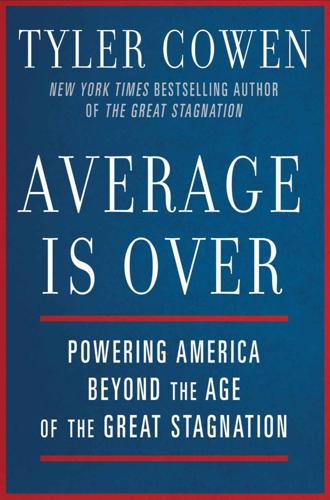
Average Is Over: Powering America Beyond the Age of the Great Stagnation
by
Tyler Cowen
Published 11 Sep 2013
Chapter 5: Our Freestyle Future For the Kasparov quotation, see “Dark horse ZackS wins Freestyle Chess Tournament,” ChessBase News, June 19, 2005, http://chessbase.com/newsdetail.asp ?new sid=2461, which is also the source for the information on the 2005 Freestyle tournaments. For some information on Anson Williams, see Daaim Shabazz, “Anson Williams . . . King of Freestyle Chess,” http://www.thechessdrum.net/blog/2007/12/21/anson-williams-king-of-freestyle-chess/, in addition to my interview with him. The Nelson Hernandez quotation comes from the same source. By the way, in Freestyle chess, Anson Williams and Nelson Hernandez have been part of a team for years, but they have never met, instead using the internet and Skype.
…
The Arno Nickel quotation is from that same source. The Nakamura quotation is from Arno Nickel, “Freestyle Chess,” http://www.free webs.com/freestyle-chess/gmarnonickel.htm. For a discussion of how opening books work, see this useful piece by Dagh Nielsen, untitled, at http://www.spaghettichess.com/Dagh%20Nielsen_tips.txt. See http://youtu.be/JSOw1Yk_RQU for an Accenture talk by Vishy Anand on finding something new in chess and the importance of memory. In addition to Freestyle chess there is Correspondence chess. In the old days, pre-computer, chess players frequently played by mail, with lags of two to three days between moves.
…
By the late 1990s, there were collaborative efforts between computer programs and top grandmasters—the human competitor would consult the program midgame. So was born “Freestyle chess.” A top-level collaborative man–machine Freestyle competition meant that a top grandmaster sat down with a computer and the grandmaster thought through the strategy of the game long and hard. The programs still had significant strategic gaps in their play, so a grandmaster supplemented or guided the strategic thinking of the machine but would rely on the machine for accurate short-run tactical calculation. As the programs improved, Freestyle chess circa 2004–2007 favored players who understood very well how the computer programs worked.

Only Humans Need Apply: Winners and Losers in the Age of Smart Machines
by
Thomas H. Davenport
and
Julia Kirby
Published 23 May 2016
If you’re a knowledge worker hoping to keep your job (and prosper) in the age of smart machines, you’ve got to learn a lot, change what you do, and sometimes swallow your pride at the prospect of becoming their helper. Learning from Freestyle Chess Several writers who touch on what we are calling mutual augmentation do so with reference to chess. It’s definitely a realm in which some humility on the part of humans is called for. In one-on-one matches, we know the best chess players are computers these days. Yet the trouncing isn’t so complete as you might have been led to believe. The economist Tyler Cowen (not surprisingly, a chess champion in his youth) and The Second Machine Age authors Erik Brynjolfsson and Andrew McAfee use the example of “freestyle chess,” in which human chess players are free to use as much help from computers as they wish.11 The two of us personally don’t play chess much (we like to get paid for thinking that hard), but we gather that under these rules, people often manage to beat the best programs.
…
• Integrate and synthesize across multiple systems and results We humans know that any one system or decision approach is likely not to provide the only possible answer. We’re pretty good at assessing which of several sources is most likely to be correct, or at triangulating across multiple answers. Freestyle chess players choose among several different systems for each move, as we’ll discuss below. Analytics experts try a variety of different models, and take the best combination of explanatory power and reasonability. Some users of IBM’s Watson have decided to develop alternative systems to see if they can perform particular cognitive tasks better.
…
The economist Tyler Cowen (not surprisingly, a chess champion in his youth) and The Second Machine Age authors Erik Brynjolfsson and Andrew McAfee use the example of “freestyle chess,” in which human chess players are free to use as much help from computers as they wish.11 The two of us personally don’t play chess much (we like to get paid for thinking that hard), but we gather that under these rules, people often manage to beat the best programs. And although freestyle chess is a unique situation, the particulars of why that is true do seem to suggest possibilities for other forms of augmentation: • Different computer programs are good at different chess situations, so the humans can bring awareness of each program’s strengths and how to integrate them. (Computer chess programs aren’t very good at noticing that there are better programs than themselves, and recusing themselves in that situation
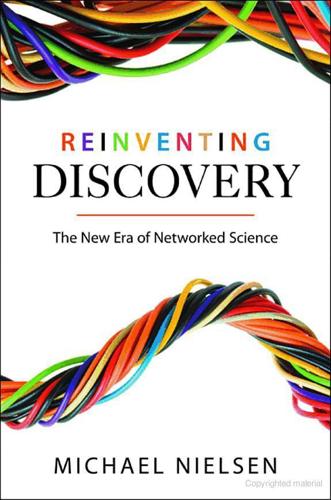
Reinventing Discovery: The New Era of Networked Science
by
Michael Nielsen
Published 2 Oct 2011
But we’ll put aside this prejudice, and think about the problems on the left. What problems can computers solve that we can’t? And how, when we put that ability together with human intelligence, can we combine the two to do more than either is capable of alone? As an example of the latter, in 2005 the chess website Playchess.com ran what they called a freestyle chess tournament, meaning a tournament where humans and computers could enter together as hybrid teams. To put it another way, the tournament allowed human intelligence to team up with data-driven intelligence, in the form of chess-playing computers, which rely on enormous opening and endgame databases, and which analyze myriad possible combinations of moves in the midgame.
…
p 108: Bioinformatics and cheminformatics are now well-established fields, with a significant literature, and I won’t attempt to single out any particular reference for special mention. Astroinformatics has emerged more recently. See especially [24] for a manifesto on the need for astroinformatics. p 113: A report on the 2005 Playchess.com freestyle chess tournament may be found at [37], with follow-up commentary on the winners at [39]. Garry Kasparov’s comments on the result are in the fascinating article [106], which contains much of interest on the subject of computers and chess. Additional commentary on Hydra’s involvement may be found at [38].
…
[35] Nicholas Carr. The Shallows: What the Internet Is Doing to Our Brains. New York: W. W. Norton & Company, 2010. [36] Henry William Chesbrough. Opennovation: The new Imperative for Creating and Profiting from Technology. Boston: Harvard Business Press, 2006. [37] Chess Base. Dark horse ZackS wins Freestyle chess tournament, June 19, 2005. http://www.chessbase.com/newsdetail.asp?newsid=2461. [38] Chess Base. Hydra misses the quarter-finals of Freestyle tournament, June 11, 2005. http://www.chessbase.com/newsdetail.asp?newsid=2446. [39] Chess Base. PAL / CSS report from the dark horse’s mouth, June 22, 2005. http://www.chessbase.com/newsdetail.asp?

Rise of the Robots: Technology and the Threat of a Jobless Future
by
Martin Ford
Published 4 May 2015
Nevertheless, we should be very skeptical that this latest iteration will prove to be an adequate solution as information technology continues on its relentless exponential path. The poster child for the machine-human symbiosis idea has come to be the relatively obscure game of freestyle chess. More than a decade after IBM’s Deep Blue computer defeated world chess champion Garry Kasparov, it is generally accepted that, in one-on-one contests between computers and humans, the machines now dominate absolutely. Freestyle chess, however, is a team sport. Groups of people, who are not necessarily world-class chess players individually, compete against each other and are allowed to freely consult with computer chess programs as they evaluate each move.
…
As things stand in 2014, human teams with access to multiple chess algorithms are able to outmatch any single chess-playing computer. There are a number of obvious problems with the idea that human-machine collaboration, rather than full automation, will come to dominate the workplaces of the future. The first is that the continued dominance of human-machine teams in freestyle chess is by no means assured. To me, the process that these teams use—evaluating and comparing the results from different chess algorithms before deciding on the best move—seems uncomfortably close to what IBM Watson does when it fires off hundreds of information-seeking algorithms and then succeeds in ranking the results.
…
And, more importantly, it doesn’t really involve any new people. The individuals that businesses are likely to hire and then couple with the best available technology are the same people who are largely immune to unemployment today. It is a small population of elite workers. Economist Tyler Cowen’s 2013 book Average Is Over quotes one freestyle chess insider who says that the very best players are “genetic freaks.”54 That hardly makes the machine collaboration idea sound like a systemic solution for masses of people pushed out of routine jobs. And, as we have just seen, there is also the problem of offshoring. A great many of those 2.6 billion people in India and China are going to be pretty eager to grab one of those elite jobs.
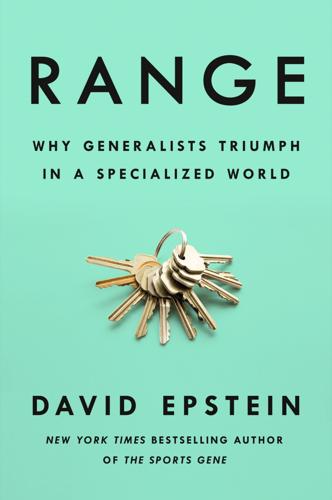
Range: Why Generalists Triumph in a Specialized World
by
David Epstein
Published 1 Mar 2019
Truong, Chess Tactics for Champions (New York: Random House Puzzles & Games, 2006), x. “Human creativity was even more paramount”; “My advantage in calculating”: Kasparov and Greengard, Deep Thinking. “freestyle chess”: For an excellent discussion of human-computer chess partnerships, see: T. Cowen, Average is Over (New York: Dutton, 2013). His teammate, Nelson Hernandez: Hernandez kindly engaged in an extended back-and-forth, explaining to me the nuances of freestyle chess and providing me with documentation about tournaments. He estimated that Williams’s Elo rating in traditional chess would be about 1800. In 2007, National Geographic TV: The program was “My Brilliant Brain.”
…
Kasparov settled for a 3–3 draw with a player he had trounced four games to zero just a month earlier in a traditional match. “My advantage in calculating tactics had been nullified by the machine.” The primary benefit of years of experience with specialized training was outsourced, and in a contest where humans focused on strategy, he suddenly had peers. A few years later, the first “freestyle chess” tournament was held. Teams could be made up of multiple humans and computers. The lifetime-of-specialized-practice advantage that had been diluted in advanced chess was obliterated in freestyle. A duo of amateur players with three normal computers not only destroyed Hydra, the best chess supercomputer, they also crushed teams of grandmasters using computers.
…
In traditional chess, Williams was probably at the level of a decent amateur. But he was well versed in computers and adept at integrating streaming information for strategy decisions. As a teenager, he had been outstanding at the video game Command & Conquer, known as a “real time strategy” game because players move simultaneously. In freestyle chess, he had to consider advice from teammates and various chess programs and then very quickly direct the computers to examine particular possibilities in more depth. He was like an executive with a team of mega-grandmaster tactical advisers, deciding whose advice to probe more deeply and ultimately whose to heed.
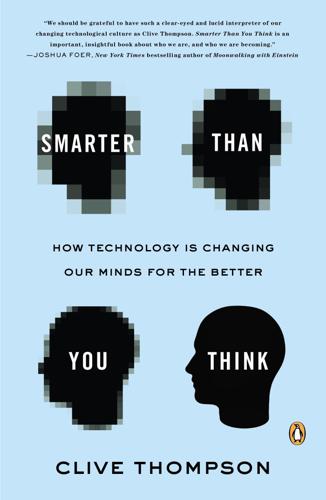
Smarter Than You Think: How Technology Is Changing Our Minds for the Better
by
Clive Thompson
Published 11 Sep 2013
“One, the best one”: Diego Rasskin-Gutman, Chess Metaphors: Artificial Intelligence and the Human Mind, trans. Deborah Klosky (Cambridge, MA: MIT Press, 2009), 50. Together, they would form what chess players later called a centaur . . . fought Kasparov to a 3–3 draw: Kasparov, How Life Imitates Chess, Kindle edition. In 2005, there was a “freestyle” chess tournament: My account of the 2005 “freestyle” chess tournament comes from personal interviews with Steven Cramton and Zackary Stephen, as well as these reports: Kasparov, How Life Imitates Chess; Kasparov, “The Chess Master and the Computer”; Steven Cramton and Zackary Stephen, “The Dark Horse Theory,” Chess Horizons, October–December 2005, 17–20, 40, accessed March 19, 2013, masschess.org/Chess_Horizons/Articles/2005-10_sample.pdf; “PAL / CSS report from the dark horse’s mouth,” ChessBase, June 6, 2005, accessed March 19, 2013, en.chessbase.com/home/TabId/211/PostId/4002467.
…
Topalov, as it turns out, appeared to be an even better Formula One “thinker” than Kasparov. On purely human terms, Kasparov was a stronger player; a month before, he’d trounced Topalov 4–0. But the centaur play evened the odds. This time, Topalov fought Kasparov to a 3–3 draw. In 2005, there was a “freestyle” chess tournament in which a team could consist of any number of humans or computers, in any combination. Many teams consisted of chess grand masters who’d won plenty of regular, human-only tournaments, achieving chess scores of 2,500 (out of 3,000). But the winning team didn’t include any grand masters at all.
…
But even that laptop-equipped grand master could be beaten by (3) relative newbies, if the amateurs were extremely skilled at integrating machine assistance. “Human strategic guidance combined with the tactical acuity of a computer,” Kasparov concluded, “was overwhelming.” Better yet, it turned out these smart amateurs could even outplay a supercomputer on the level of Deep Blue. One of the entrants that Cramton and Stephen trounced in the freestyle chess tournament was a version of Hydra, the most powerful chess computer in existence at the time; indeed, it was probably faster and stronger than Deep Blue itself. Hydra’s owners let it play entirely by itself, using raw logic and speed to fight its opponents. A few days after the advanced chess event, Hydra destroyed the world’s seventh-ranked grand master in a man-versus-machine chess tournament.
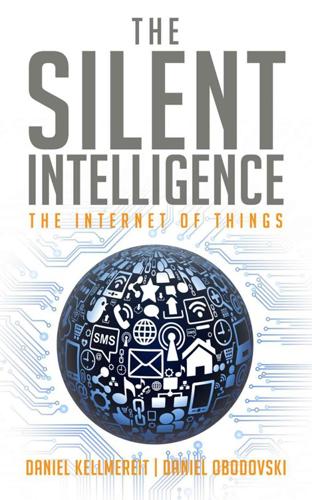
The Silent Intelligence: The Internet of Things
by
Daniel Kellmereit
and
Daniel Obodovski
Published 19 Sep 2013
Considering how much decision-making ability has already been given to machines and how much more is going to go that way, and considering the speed at which information flows from sensors and devices to the cloud, will humans be able to comprehend? Are humans the major limiting factor in the development of the Internet of Things today? And, more importantly, will humans be able to cope with all this information? When we spoke with Astro Teller of Google, he reminded us of an interesting story. In 2005, there was a freestyle chess tournament hosted by the website PlayChess.com. “Freestyle” meant any humans or computers, or any combination of humans and computers, could participate in the tournament. Who do you think won? One would expect a grand master or a supercomputer, or perhaps a grand master with an average computer, or an amateur with a supercomputer.
…
The company that figures it out might become the first trillion-dollar company. However, a lot needs to happen in terms of regulation and standardization to get there. In the meantime, humans will have to do a lot of strategic thinking and planning, in a not too dissimilar way from the winners of the freestyle chess tournament. In the next chapter we will look into the key areas of the Internet of Things. 15 Bill Gates, Business @ the Speed of Thought: Succeeding in the Digital Economy (New York: Grand Central Publishing, 1999). 16 Garry Kasparov, “New in Chess,” Chess 2.0, May 2005. Also Garry Kasparov, “The Chess Master and the Computer,” New York Review of Books, February 11, 2010. http://www.nybooks.com/articles/archives/2010/feb/11/the-chess-master-and-the-computer/. 17 Second Life is an online virtual world developed by Linden Lab.

The Inevitable: Understanding the 12 Technological Forces That Will Shape Our Future
by
Kevin Kelly
Published 6 Jun 2016
Varian, Information Rules: A Strategic Guide to the Network Economy (Boston: Harvard Business Review Press, 1998). famous man-versus-machine match: “Deep Blue,” IBM 100: Icons of Progress, March 7, 2012. rather than competes against them: Owen Williams, “Garry Kasparov—Biography,” KasparovAgent.com, 2010. freestyle chess matches: Arno Nickel, Freestyle Chess, 2010. centaurs won 53 games: Arno Nickel, “The Freestyle Battle 2014,” Infinity Chess, 2015. several different chess programs: Arno Nickel, “‘Intagrand’ Wins the Freestyle Battle 2014,” Infinity Chess, 2015. grand master rating of all time: “FIDE Chess Profile (Carlsen, Magnus),” World Chess Federation, 2015.
…
If this database tool was fair for an AI, why not for a human? Let the human mastermind be augmented by a database just as Deep Blue’s was. To pursue this idea, Kasparov pioneered the concept of man-plus-machine matches, in which AI augments human chess players rather than competes against them. Now called freestyle chess matches, these are like mixed martial arts fights, where players use whatever combat techniques they want. You can play as your unassisted human self, or you can act as the hand for your supersmart chess computer, merely moving its board pieces, or you can play as a “centaur,” which is the human/AI cyborg that Kasparov advocated.

The Second Machine Age: Work, Progress, and Prosperity in a Time of Brilliant Technologies
by
Erik Brynjolfsson
and
Andrew McAfee
Published 20 Jan 2014
Dutch grandmaster Jan Hein Donner summed up the current attitude of human chess masters. When asked how he would prepare for a match against a computer, he replied, “I would bring a hammer.”2 It might seem, then, that humans no longer have anything to contribute to the game of chess. But the invention of ‘freestyle’ chess tournaments shows how far this is from the truth. In these events, teams can include any combination of human and digital players. As Kasparov himself explains when discussing the results of a 2005 freestyle contest, The teams of human plus machine dominated even the strongest computers. The chess machine Hydra, which is a chess-specific supercomputer like Deep Blue, was no match for a strong human player using a relatively weak laptop.
…
Their skill at manipulating and “coaching” their computers to look very deeply into positions effectively counteracted the superior chess understanding of their grandmaster opponents and the greater computational power of other participants. Weak human + machine + better process was superior to a strong computer alone and, more remarkably, superior to a strong human + machine + inferior process.3 The key insight from freestyle chess is that people and computers don’t approach the same task the same way. If they did, humans would have had nothing to add after Deep Blue beat Kasparov; the machine, having learned how to mimic human chess-playing ability, would just keep riding Moore’s Law and racing ahead. But instead we see that people still have a great deal to offer the game of chess at its highest levels once they’re allowed to race with machines, instead of purely against them.

Army of None: Autonomous Weapons and the Future of War
by
Paul Scharre
Published 23 Apr 2018
President, we and you ought not”: Department of State Telegram Transmitting Letter From Chairman Khrushchev to President Kennedy, October 26, 1962, http://microsites.jfklibrary.org/cmc/oct26/doc4.html. 317 “there are scenarios in which”: Haas, “Autonomous Weapon Systems.” 19 Centaur Warfighters: Humans + Machines 321 Gary Kasparov: Mike Cassidy, “Centaur Chess Brings out the Best in Humans and Machines,” BloomReach, December 14, 2014, http://bloomreach.com/2014/12/centaur-chess-brings-best-humans-machines/. 321 centaur chess: Tyler Cowen, “What are Humans Still Good for? The Turning Point in Freestyle Chess may be Approaching,” Marginal Revolution, November 5, 2013, http://marginalrevolution.com/marginalrevolution/2013/11/what-are-humans-still-good-for-the-turning-point-in-freestyle-chess-may-be-approaching.html. 322 “On 17 April 1999”: Mike Pietrucha, “Why the Next Fighter will be Manned, and the One After That,” War on the Rocks, August 5, 2015, http://warontherocks.com/2015/08/why-the-next-fighter-will-be-manned-and-the-one-after-that/. 323 Commercial airliners use automation: Mary Cummings and Alexander Stimpson, “Full Auto Pilot: Is it Really Necessary to Have a Human in the Cockpit?

Futureproof: 9 Rules for Humans in the Age of Automation
by
Kevin Roose
Published 9 Mar 2021
One example these types of optimists often cite is Garry Kasparov, the chess grandmaster who famously lost a series of games to IBM’s Deep Blue computer program in 1997. After being beaten by Deep Blue, the legend goes, Kasparov realized that human chess players and computers would be better if they worked together. So he started promoting “freestyle chess,” a type of game in which each player could consult with a computer program, and combine the machines’ insights with their own expertise. These human-computer teams, Kasparov wrote, would be “overwhelming” when pitted against computers alone. The same principle will apply, the optimists argue, to professionals in all kinds of fields.
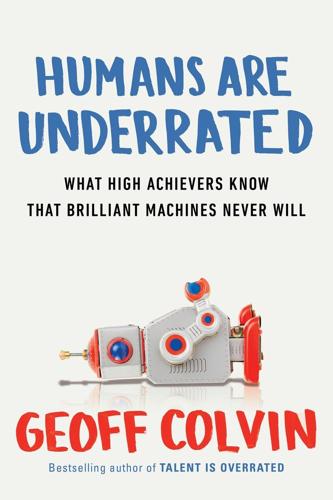
Humans Are Underrated: What High Achievers Know That Brilliant Machines Never Will
by
Geoff Colvin
Published 3 Aug 2015
Movellan, “The Faces of Engagement: Automatic Recognition of Student Engagement from Facial Expressions,” IEEE Transactions on Affective Computing, vol. 5, no. 1(2014), pp. 86–98. MIT’s stress-monitoring car . . . http://affect.media.mit.edu/pdfs/14.Hernandez_et_al-DIS.pdf. For Cowen’s observations on competition in chess, see his blog entry at http://marginalrevolution.com/marginalrevolution/2013/11/what-are-humans-still-good-for-the-turning-point-in-freestyle-chess-may-be-approaching.html. CHAPTER THREE The case in Arizona Superior Court . . . The research is described in D. A. Krauss, J. G. McCabe, and J. D. Lieberman, “Dangerously Misunderstood: Representative Jurors’ Reactions to Expert Testimony on Future Dangerousness in a Sexually Violent Predator Trial,” Psychology, Public Policy, and Law, 25 July 2011.
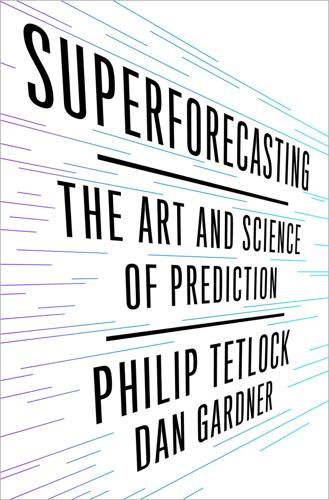
Superforecasting: The Art and Science of Prediction
by
Philip Tetlock
and
Dan Gardner
Published 14 Sep 2015
Machines may get better at “mimicking human meaning,” and thereby better at predicting human behavior, but “there’s a difference between mimicking and reflecting meaning and originating meaning,” Ferrucci said. That’s a space human judgment will always occupy. In forecasting, as in other fields, we will continue to see human judgment being displaced—to the consternation of white-collar workers—but we will also see more and more syntheses, like “freestyle chess,” in which humans with computers compete as teams, the human drawing on the computer’s indisputable strengths but also occasionally overriding the computer. The result is a combination that can (sometimes) beat both humans and machines. To reframe the man-versus-machine dichotomy, combinations of Garry Kasparov and Deep Blue may prove more robust than pure-human or pure-machine approaches.
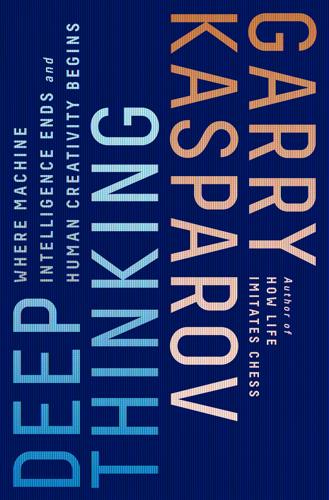
Deep Thinking: Where Machine Intelligence Ends and Human Creativity Begins
by
Garry Kasparov
Published 1 May 2017
It didn’t render knowledge and technology obsolete, of course, but it illustrated the power of efficiency and coordination to dramatically improve results. I represented my conclusion like this: weak human + machine + better process was superior to a strong computer alone and, more remarkably, superior to a strong human + machine + inferior process. I wrote about the freestyle chess result and my conclusion in How Life Imitates Chess and expanded on it a little in a 2010 article for the New York Review of Books. The response it received was quite a surprise, as calls and emails came in from all over the world about my little formulation. Invitations to lecture about the importance of superior process in human-machine collaboration came in from Google and other Silicon Valley companies as well as investment firms and business software companies who told me that they had been trying to make this case to potential customers for years.
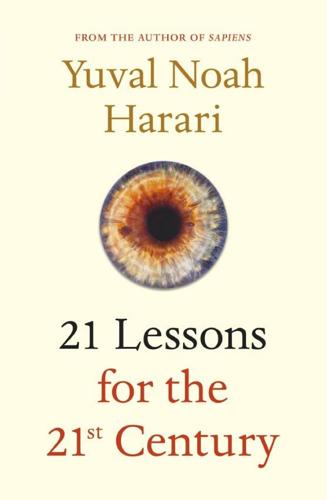
21 Lessons for the 21st Century
by
Yuval Noah Harari
Published 29 Aug 2018
., ‘Mastering Chess and Shogi by Self-Play with a General Reinforcement Learning Algorithm’, arXiv (2017), https://arxiv.org/pdf/1712.01815.pdf; see also Sarah Knapton, ‘Entire Human Chess Knowledge Learned and Surpassed by DeepMind’s AlphaZero in Four Hours’, Telegraph, 6 December 2017. 19 Cowen, Average is Over, op. cit.; Tyler Cowen, ‘What are humans still good for? The turning point in freestyle chess may be approaching’, Marginal Revolution, 5 November 2013. 20 Maddalaine Ansell, ‘Jobs for Life Are a Thing of the Past. Bring On Lifelong Learning’, Guardian, 31 May 2016. 21 Alex Williams, ‘Prozac Nation Is Now the United States of Xanax’, New York Times, 10 June 2017. 22 Simon Rippon, ‘Imposing Options on People in Poverty: The Harm of a Live Donor Organ Market’, Journal of Medical Ethics 40 (2014), 145–50; I.

The Rise and Fall of Nations: Forces of Change in the Post-Crisis World
by
Ruchir Sharma
Published 5 Jun 2016
Lund, Susan, et al. “Financial Globalization: Retreat or Reset?” McKinsey Global Institute, March 2013. Manyika, James, et al. “Global Growth: Can Productivity Save the Day in an Aging World?” McKinsey Global Institute, January 2015. Mauboussin, Michael J., and Dan Callahan. “Learning from Freestyle Chess.” Credit Suisse Research, September 10, 2014. Miller, Arthur. “The Year It Came Apart.” New York, Dececember 30, 1974. O’Neill, Jim. “Building Better Global Economic BRICs.” Goldman Sachs Global Economics Paper no. 66, November 30, 2001. Peters, Heiko, and Stefan Schneider. “Sluggish Global Trade—Cyclical or Structural?”
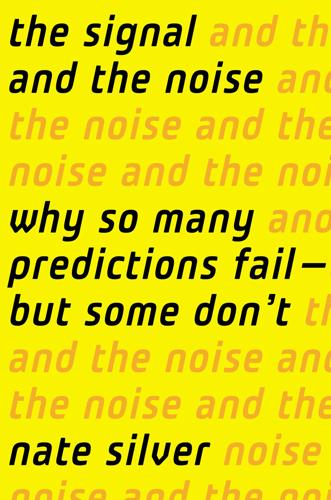
The Signal and the Noise: Why So Many Predictions Fail-But Some Don't
by
Nate Silver
Published 31 Aug 2012
Kasparov and Deep Blue’s programmers saw each other as antagonists, but they each taught us something about the complementary roles that computer processing speed and human ingenuity can play in prediction. In fact, the best game of chess in the world right now might be played neither by man nor machine.47 In 2005, the Web site ChessBase.com, hosted a “freestyle” chess tournament: players were free to supplement their own insight with any computer program or programs that they liked, and to solicit advice over the Internet. Although several grandmasters entered the tournament, it was won neither by the strongest human players nor by those using the most highly regarded software, but by a pair of twentysomething amateurs from New Hampshire, Steven Cramton and Zackary “ZakS” Stephen, who surveyed a combination of three computer programs to determine their moves.48 Cramton and Stephen won because they were neither awed nor intimidated by technology.